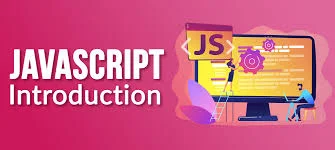Introduction to JavaScript: A Beginner's Guide
JavaScript is one of the most popular programming languages in the world. It powers the dynamic behavior on websites and is a crucial skill for web developers. Whether you want to create interactive web pages, build games, or develop server-side applications, JavaScript is the language to learn. This guide will introduce you to the basics of JavaScript and cover essential syntax and keywords for beginners.
What is JavaScript?
JavaScript is a versatile, high-level programming language that allows you to implement complex features on web pages. It is used alongside HTML and CSS to create responsive and interactive websites. While HTML structures the content and CSS styles it, JavaScript adds functionality and interactivity.
Why Learn JavaScript?
- Widely Used: JavaScript is everywhere – from web development to mobile applications and even server-side programming with Node.js.
- Community Support: With a massive community, there are countless resources, libraries, and frameworks available to help you learn and build projects.
- Job Opportunities: Knowledge of JavaScript is often a requirement for many web development jobs.
JavaScript Basics
Before we dive into the coding aspect, let's understand some basic concepts:
- Variables: Used to store data values.
- Data Types: Different types of data you can work with, such as numbers, strings, and booleans.
- Operators: Symbols used to perform operations on variables and values.
- Functions: Blocks of code designed to perform a particular task.
- Control Structures: Decision-making and looping constructs like if-else statements and loops.
JavaScript Syntax
The syntax of JavaScript is the set of rules that defines a correctly structured JavaScript program. Let's explore the basic syntax and keywords.
1. Variables
Variables are used to store information that can be used and changed later in the program. JavaScript provides three ways to declare a variable:
var- The oldest way to declare a variable.let- Preferred for variables that can be reassigned.const- Used for variables that shouldn’t be reassigned.
javascriptvar name = "John"; // Declaring a variable with var
let age = 25; // Declaring a variable with let
const country = "USA"; // Declaring a constant
2. Data Types
JavaScript supports various data types:
- String: Represents text. e.g.,
"Hello, World!" - Number: Represents both integer and floating-point numbers. e.g.,
42,3.14 - Boolean: Represents logical entities. e.g.,
true,false - Array: An ordered collection of items. e.g.,
[1, 2, 3] - Object: A collection of key-value pairs. e.g.,
{ name: "John", age: 30 } - Null: Represents the absence of value.
- Undefined: A variable without a value.
javascript 986152let stringExample = "Hello, JavaScript!";
let numberExample = 100;
let booleanExample = true;
let arrayExample = [1, 2, 3, 4];
let objectExample = { firstName: "John", lastName: "Doe" };
let nullExample = null;
let undefinedExample;
3. Operators
Operators are symbols that perform operations on operands. JavaScript includes:
- Arithmetic Operators:
+,-,*,/,% - Assignment Operators:
=,+=,-=,*=,/= - Comparison Operators:
==,!=,===,!==,<,>,<=,>= - Logical Operators:
&&(AND),||(OR),!(NOT)
javascriptlet sum = 10 + 5; // Arithmetic operator
let isEqual = (5 == "5"); // Comparison operator
let isIdentical = (5 === "5"); // Strict comparison operator
let isGreater = (10 > 5); // Comparison operator
let result = (true && false); // Logical operator
4. Functions
Functions are reusable blocks of code that perform a specific task. You can define functions using the function keyword.
javascriptfunction greet(name) {
return "Hello, " + name + "!";
}
let greeting = greet("Alice");
console.log(greeting); // Output: Hello, Alice!
5. Control Structures
JavaScript provides control structures for decision-making and looping:
- If-Else Statement:
javascriptlet score = 85;
if (score >= 90) {
console.log("A Grade");
} else if (score >= 75) {
console.log("B Grade");
} else {
console.log("C Grade");
}
- For Loop:
- 98615241
javascript
for (let i = 0; i < 5; i++) {
console.log("Number: " + i);
}
- While Loop:
- 98615241
javascriptlet count = 0;
while (count < 5) {
console.log("Count: " + count);
count++;
}
- Switch Statement:
- 98615241
javascriptlet day = "Monday";
switch (day) {
case "Monday":
console.log("Start of the work week.");
break;
case "Friday":
console.log("Almost the weekend!");
break;
default:
console.log("Just another day.");
}
JavaScript Keywords
Here are some essential JavaScript keywords you should know:
var,let,const: Declare variables.function: Define a function.if,else,else if: Conditional statements.switch,case,default: Switch statement.for,while,do: Loop constructs.return: Return a value from a function.break,continue: Control loop execution.try,catch,finally: Handle exceptions.
Best Practices
- Use
letandconst: Prefer usingletandconstovervarto avoid issues with variable scoping. - Use Descriptive Variable Names: Choose meaningful names for your variables and functions for better code readability.
- Indentation and Formatting: Properly format and indent your code to make it easy to read and maintain.
- Comment Your Code: Use comments to explain complex logic or important code sections.
Conclusion
JavaScript is a powerful and essential language for web development. By understanding its basic syntax and keywords, you can start building interactive and dynamic websites. Keep practicing and exploring more advanced topics like DOM manipulation, asynchronous programming, and frameworks like React and Angular to enhance your skills.
Further Reading and Resources
- MDN Web Docs: JavaScript Guide
- JavaScript.info: The Modern JavaScript Tutorial
- W3Schools: JavaScript Tutorial
.png)




